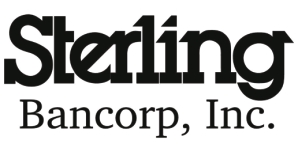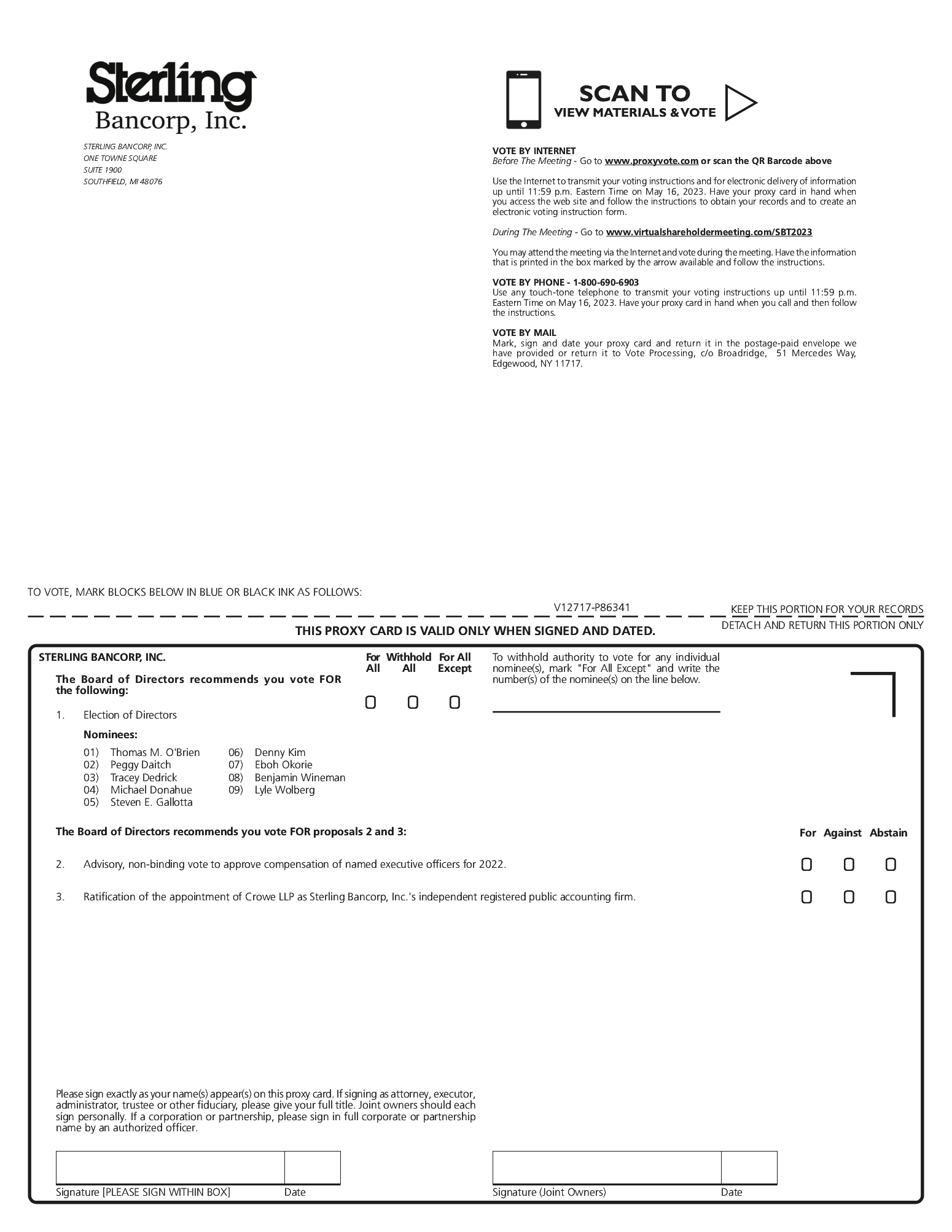Our improved credit metrics during 2022 include a decrease in our nonperforming assets from $83.3 million at December 31, 2021 to $38.3 million at December 31, 2022, including a decrease in our nonperforming loans held for investment from $62.6 million at December 31, 2021 to $33.7 million at December 31, 2022 and a decrease in our nonaccrual loans held for sale from $18.0 million at December 31, 2021 to $2.0 million at December 31, 2022. Further, we recorded a recovery of loan losses of $(9.9) million for 2022 compared to a recovery of loan losses of $(8.3) million for 2021. Our allowance for loan losses also decreased from $56.5 million at December 31, 2021 to $45.5 million at December 31, 2022.
All the above accomplishments are reflective of the significant efforts of the management team led by Mr. O’Brien with the full support of the Board. Mr. O’Brien has been with the Company for almost three (3) years and together with the Board has sought to restore the Company’s financial and regulatory standing, reduce high expenses related to the completion of the aforementioned major projects and continue to cooperate with, and eventually bring to a conclusion, the various government investigations.
Accomplishments and Challenges for 20202022 and First Quarter 20212023
Accomplishments
Termination of the OCC Agreement
Resolution of the OCC investigation
Resolution of the DOJ investigation
Settled the shareholder derivative suit
Exceeded all applicable regulatory capital requirements.requirements
○ | The Company’s total adjusted capital to risk-weighted assets at 2020 year-end was 22.58%. |
| ○ | The Company’s Tier 1 capital to adjusted tangible assets at 20202022 year-end was 8.08%13.5%. |
Reached an agreement in principle to settle the pending securities class action lawsuit.Reduced criticized and classified loans during 2022 by 50%
Regained compliance with SEC reporting requirements.
Increased total consolidated deposits to $3.1 billion at 2020 year-end to build liquidity.Significantly improved asset quality
Challenges
Continue significant cooperation efforts with ongoing government investigations
Manage costs and requirements of regulatory agreementsongoing compliance efforts including securities law compliance and investigations.
Reversereporting requirements of the decline in net income.Plea Agreement with the DOJ
Manage impactreimbursement of third party costs associated with government investigations
Continue to reduce the COVID-19 pandemic.volume of classified loans
Replace Advantage Loan Program withIdentify, prepare for and launch new loan products
Find a similarly profitable product.
Thomas M. O’Brien
With respect to executive management and compensation in 2020, the Board of Directors focused on hiring a new Chief Executive Officer. Early in 2020, the Board of Directors determined that the Company needed an independent monitor acting as a non-executive chairman of the Board to help oversee the response to regulatory concerns and tackle the multiple operational challenges faced by the Company, including, but not limited to, repercussions related to the Advantage Loan Program. After reviewing the backgrounds and resumes of potential candidates available for such a role, the Board of Directors determined that Mr. O’Brien was the best fitreplacement service provider for the position dueservice provider to his proven experiencewhom we outsourced our residential loan origination function in turning around troubled financial institutions2022 who exited the business later in 2022
Maintain and his reputation as a banking industry leader. In March 2020, Mr. O’Brien met with the Board of Directors and agreed to a one-year consulting contract to provide strategic advice to the Board and assist management of the Bank regarding, among other things, bank operations, risk assessment and management, matters under current or future internal investigation and strategic transactions. With the resignation of Mr. Lopp as President and CEO on May 7, 2020, the Board offered a permanent executive management position to Mr. O’Brien. Mr. O’Brien was subsequently appointed as Chairman, President and CEO, effective as of June 3, 2020, after the receipt of regulatory non-objection.
Background of Mr. O’Brien. Mr. O’Brien has over 44 years of experienceimprove customer confidence in the financial services industryface of recent bank failures and has served as President and Chief Executive Officer of many financial institutions, as described in detail in “Proposal No. 1—Continuing Directors—Whose Terms Expire in 2022.”
Based on the Compensation Committee’s and the Board’s knowledge of Mr. O’Brien’s expertise at similar banking institutions, the Board and the Compensation Committee determined that Mr. O’Brien possesses the necessary qualifications and experience to address the challenges at Sterling as its new Chairman, President and CEO.
Executive Management Turnover. In May 2020, the Company was facing a leadership void. In the six months prior to Mr. O’Brien’s appointment as Chairman, President and CEO of the Company, the majority of executive management had retired, resigned or been terminated. Gary Judd, the Company’s CEOdeposit flight from August 2008, had retired effective as of November 30, 2019. Thomas Lopp, who had been with the Company since 2002 and had replaced Mr. Judd as CEO in November 2019, abruptly resigned as President and CEO on May 7, 2020. And Michael Montemayor, the Chief Lending Officer and President of Retail and Commercial Banking, who had been with the Company since 1992, was terminated by the Company as of May 29, 2020. The Board was searching for someone who could provide strong and steady leadership and much needed continuity, with expertise in turning around troubled financial institutions and an established reputation in the banking industry.system
Formidable Challenges. In May 2020, the Company was facing significant challenges on multiple fronts. The Bank was subject to a formal agreement with the OCC relating primarily to certain aspects of the Bank’s BSA/AML compliance program and credit administration. The Bank’s Advantage Loan Program, which comprised 78% of the Banks’s residential loan portfolio at December 31, 2020, had been voluntarily suspended on December 9, 2019 and was subsequently discontinued on March 6, 2020. The suspension of this loan program created a significant revenue



















